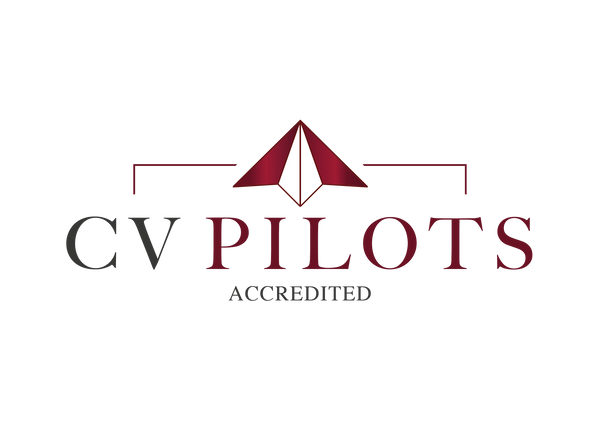
Chronological vs Functional vs Combination CVs: Which Format Works Best?
Chronological vs Functional vs Combination CVs: Which Format Should You Use?
Before you start writing your CV, you need to decide how to structure it. The right CV format makes your career story easier to follow, helps you pass through applicant tracking systems (ATS), and ensures recruiters see your most relevant experience first.
There are three main types of CV formats:
-
Chronological (reverse-chronological)
-
Functional (skills-based)
-
Combination (hybrid)
Each has its strengths and weaknesses. Below, we’ll walk through when to use each, when to avoid them, and why most professionals should stick to the tried-and-tested chronological CV.
If you’re ready to take the guesswork out of job applications and
give yourself a genuine competitive edge, our CV Reviews and
CV Template Bundles are designed to help you stand out in even
the toughest hiring markets.
CV Reviews – Save £60
If you’re not sure your CV is truly working for you, our
Professional CV Review Service provides in-depth, recruiter-level
feedback on content, structure, and ATS compatibility. You’ll receive
a personalised action plan showing exactly what’s holding you back
and how to fix it, so you can apply with confidence. Use discount code
PCVR60 at checkout to save £60 and give your next application the
competitive edge it deserves.
CV Template Bundles – Save £40
Prefer to write your own CV but want a proven framework? Our
CV Template Bundles include an ATS-friendly, recruiter-approved
template, plus our storytelling framework, metrics tracker, CV checklist,
and scorecard - everything you need to create a document that sells
your skills and achievements. Use discount code CVTB40 to get
£40 off and start building a CV that gets noticed for all the right
reasons.
These tools pull back the curtain on the hiring process, cutting
through the smoke and mirrors so you understand exactly what
employers and ATS systems are really looking for
Chronological CV
A chronological CV presents your work experience in reverse order, starting with your most recent role and working backwards. This is by far the most common and widely accepted format.
It usually starts with a short summary or list of career highlights, followed by detailed work experience, education, and additional sections such as qualifications or leadership activities.
Strengths:
-
Considered the industry standard worldwide
-
Recruiters can quickly understand your career progression
-
ATS-friendly and easy to scan digitally
-
Gives context by showing achievements within each role
-
Provides a clean, professional structure with minimal duplication
Weaknesses:
-
Harder to use if you have gaps in employment or little to no experience (e.g. recent graduates)
👉 Best for: Professionals with a consistent career path and several years of experience.
Functional CV
A functional CV (or skills-based CV) organises content around your skills rather than your job history. Instead of listing each role with responsibilities and achievements, it groups your expertise into themes such as “Leadership,” “Data Analysis,” or “Project Management.”
Under each theme, you provide examples of when you’ve used those skills.
Strengths:
-
Helpful for students or early-career professionals with limited experience
-
Can downplay career breaks or job changes
-
Allows career switchers to highlight transferable skills
Weaknesses:
-
Not favoured by most recruiters (often seen as avoiding the timeline)
-
Less compatible with ATS systems
-
Leaves recruiters hunting for job titles, employers, and dates
-
Can feel disjointed, since examples are pulled out of context
👉 Best for: Very early-career candidates or those making a major career change where past job titles don’t reflect target roles.
Combination CV
A combination CV blends both approaches. It typically starts with a skills-based summary, followed by a reverse-chronological list of work experience.
Strengths:
-
Balances the need to highlight key skills while still providing work history
-
A step up from the functional CV in terms of clarity
Weaknesses:
-
Still not as clear or concise as a chronological CV
-
Risk of overlap, as the same achievements may appear in both the skills and work sections
-
Buries the job history recruiters usually want to see first
👉 Best for: Applicants in transition who want to highlight transferable skills but still provide career context.
Other CV Formats
While the three formats above are the most common, you may also come across graphic or creative CVs.
Graphic CVs
Graphic CVs often use visuals such as logos, icons, charts, or multiple columns. While they might look eye-catching, they often:
-
Confuse ATS systems
-
Distract from content
-
Risk being seen as “style over substance”
Creative CVs
Creative CVs take it even further with designs like magazine covers, board game layouts, or brochures. These may be acceptable in very creative industries (design, media, arts), but they’re not appropriate for most professions.
In Summary
For the vast majority of professionals, the reverse-chronological CV is the safest and most effective choice. It’s recruiter-approved, ATS-friendly, and highlights your career story in a way that is easy to follow.
That said, functional or combination CVs may be useful in specific circumstances—such as for students, career changers, or those with significant career breaks.
If you’re not sure which format works best for your situation, remember this: recruiters value clarity, credibility, and context above all else. Stick to a format that helps you showcase those qualities.
To find out more, visit our website www.cvpilots.co.uk If you have any further questions, you can either book a consultation call with one of our team, or get in touch via email on team@cvpilots.co.uk

